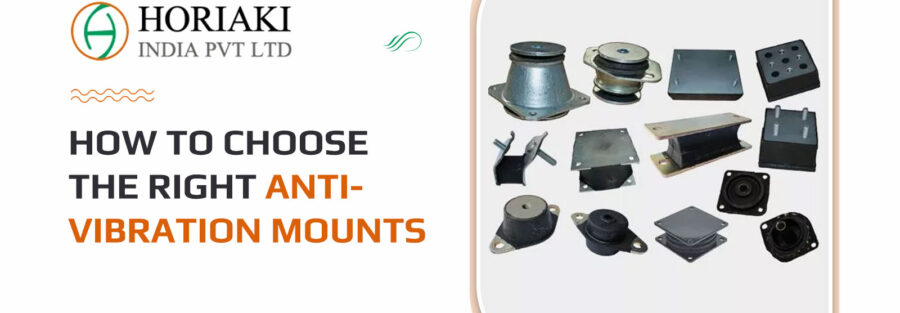Anti-vibration mounts are an affordable way to reduce the negative effects of vibration on your equipment/machinery and surroundings. Natural rubber or neoprene elastomers may solve most vibration isolation issues.
In this article, we’ll look at how to choose the right anti-vibration rubber mounts for your gear. As a leading anti vibration mounts manufacturer, we help clients find the best solutions for their needs.
Determine the equipment’s weight and load distribution.
The first step in selecting the appropriate anti-vibration rubber mounting is to estimate the weight of the equipment to be separated. The equipment’s weight will determine the size, kind, and number of rubber mountings required. Determine the total weight (kg) of the equipment/machinery and the number of mountings that will be needed. The heavier the overall weight, the more mountings are required to decrease machine vibrations.
Determine the equipment’s vibration profile
The next stage is to calculate the equipment’s vibration profile, including frequency (Hertz, Hz), amplitude, and RPM (revolutions per minute). Determine the usual operational speed of the machinery or RPM (revolutions per minute), also known as the forcing frequency, and the lowest operating speed (generally at idle), which determines the amount of vibration created by the equipment/machinery. The stresses and moments created by this RPM will determine the type of anti-vibration mounts required to reduce vibrations.
Determine the operating or application environment
Consider the operational circumstances and where the equipment will be installed–outside or within buildings, roofs, ceiling mounted, floor mounted, or in any other location.
Temperature, humidity, industrial chemicals, cleaning solvents, and harsh factors can all have an impact on the efficiency of your anti-vibration rubber mounting.
Choose a rubber mounting that is specifically engineered to operate well in your equipment’s operational environment. The type of rubber chosen depends on the environmental conditions.
Consider the type of mounting
There are several varieties of anti-vibration mounts to select from, including vibration insulation plates, wedge mounts, screw support mounts, stud mounts, and many others. The sort of mounting you select will be determined by the equipment’s vibration profile and damping needs.
Vibration dampening and impact load resistance have an inverse connection depending on the natural frequency of anti-vibration rubber mounts. A lower natural frequency improves vibration dampening but reduces impact load resistance, and vice versa.
The mounting choices are influenced by whether vibrational frequencies are propagating to the machinery or whether vibrations created in the equipment need to be suppressed. Vibration isolators block the transmission of vibrations whereas vibration dampeners function to reduce the transfer of vibrational energy and influence the selection of anti-vibration mounts.
Consider the maintenance requirements
Finally, check the anti-vibration rubber mounting’s maintenance requirements. Some mountings may need to be tightened or lubricated regularly than others.
Get the Best Anti-Vibration Mounts
Horaiki India Private Limited is a leading manufacturer and supplier of anti-vibration mounts in India. We design customized mountings according to the specifications of our customers. Contact us to learn more about our products.

Horiaki India Private Limited
Horiaki India Private Limited was established in the year 1998 with an aim to manufacture and supply premium rubber bonded products in India as well as the international market.

